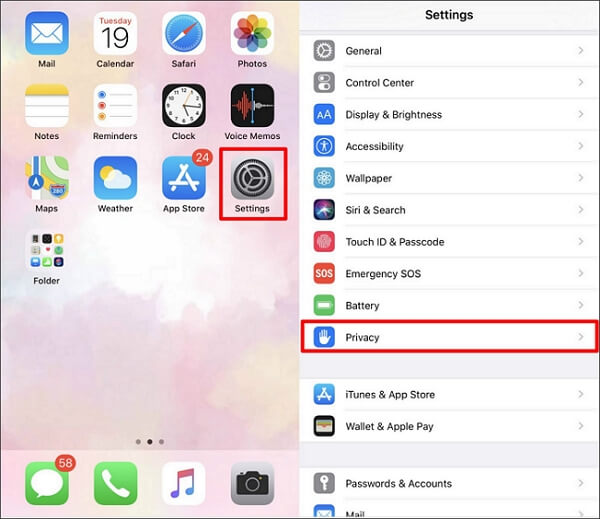

In that same area, you should see a link to “manage activity.” Clicking there will take you to what Google calls the Timeline it has a map view and information about where you’ve been. If you’re using Safari, you can find Activity controls under the three dots at the top towards the right.When you’re on the Web & App Activity page, look for an option at left that says “Delete activity by” to manage Google’s records on your actions.Next, in the box below Web and App Activity, you’ll see another field called Location History. Turn it off (or in Google’s somewhat distressing lingo, “pause” it). At the top, you’ll see a box for Web & App Activity. In your browser, go to myactivity.google.com, then click on Activity controls, which will be to the left if you’re using Chrome. It might be easiest to do this on a desktop.
Scroll down to the Privacy section, then to Location, and click on it. Under Settings, navigate to Security & Location. Step 2: For AndroidIf you’re an Android smartphone user, you can take additional steps on that mobile device.
Apps with access to your photos can piece together a rough idea of your location data by analyzing the geotags on your photos. You’ll get a prompt that asks “Allow Maps to access this device’s location?”You can also turn off location permission for your camera on that same app-level permission page, meaning that your phone shouldn’t know where you are when you snap a pic and thus won’t include that in the image’s metadata. If you do this, test it by launching the Map app and try to have it detect your location. Turn it off if you want, or leave it on and specifically manage what apps can and cannot use your location by clicking on “App-level permissions.” Going to that screen allows you to turn off the location access that Google Maps has, for example. After checking that, go back to the main Location page on your phone by hitting the back arrow at upper left.At the top of the Location page, there’s a toggle to switch off all location services. If you’ve switched that off from your browser during the previous step, it should also be off here.
What else to keep in mind?“Google has too strong of a grip on the Android ecosystem, and by the same token Apple has a very strong grip on the iOS ecosystem,” Sean O’Brien, a member of the Yale Privacy Lab, says. Clicking through to that will allow you to learn what your phone has in turn learned about where you’ve been, although it notes that “Significant Locations are encrypted and cannot be read by Apple.”As a general rule, your phone will become less functional as you disable location services: if you want your Google Map app to know where you are when you push the little compass-like icon at bottom right, you’ll need to at least enable location services for it while you’re using the app. You can even control location data in the phone’s default browser via the “Safari Websites” item.Finally, at the very bottom, there’s an option for “System Services.” You’ll find a slew of other phone services there that you can decide whether or not you want to allow to know your location, including “Significant Locations” at the bottom. You’ll see three options for most apps: “Never,” “While Using the App,” or “Always.” When in doubt, “While Using the App” is a safer option than “Always,” and of course, “Never” shuts things down entirely for that app’s location awareness.If you’re specifically concerned about Google products, look for the apps made by Google on this list: Google Calendar, Home, Maps, and News may be installed. From there you can turn it off entirely, or manage what individual apps are allowed to take advantage of location data.
That’s because he says that F-Droid is “audited by volunteers,” whereas, he adds, “Google has proven to be a poor steward of the Play Store.”Finally, consider auditing your privacy settings on key social networks, like Facebook: pay special attention to what apps and websites you’ve integrated into your account, and remove them as you see fit. And O’Brien suggests installing F-Droid on Android phones, and using that instead of the Google Play store to get apps. “The chain of trust between the distributor of the software, which is Google in this case, and the end user, is just broken,” O’Brien adds.Still concerned about privacy and security? You can consider deleting apps you don’t use, using an encrypted communications service like Signal, or fighting surveillance by reading up on what the Electronic Frontier Foundation recommends.


 0 kommentar(er)
0 kommentar(er)
